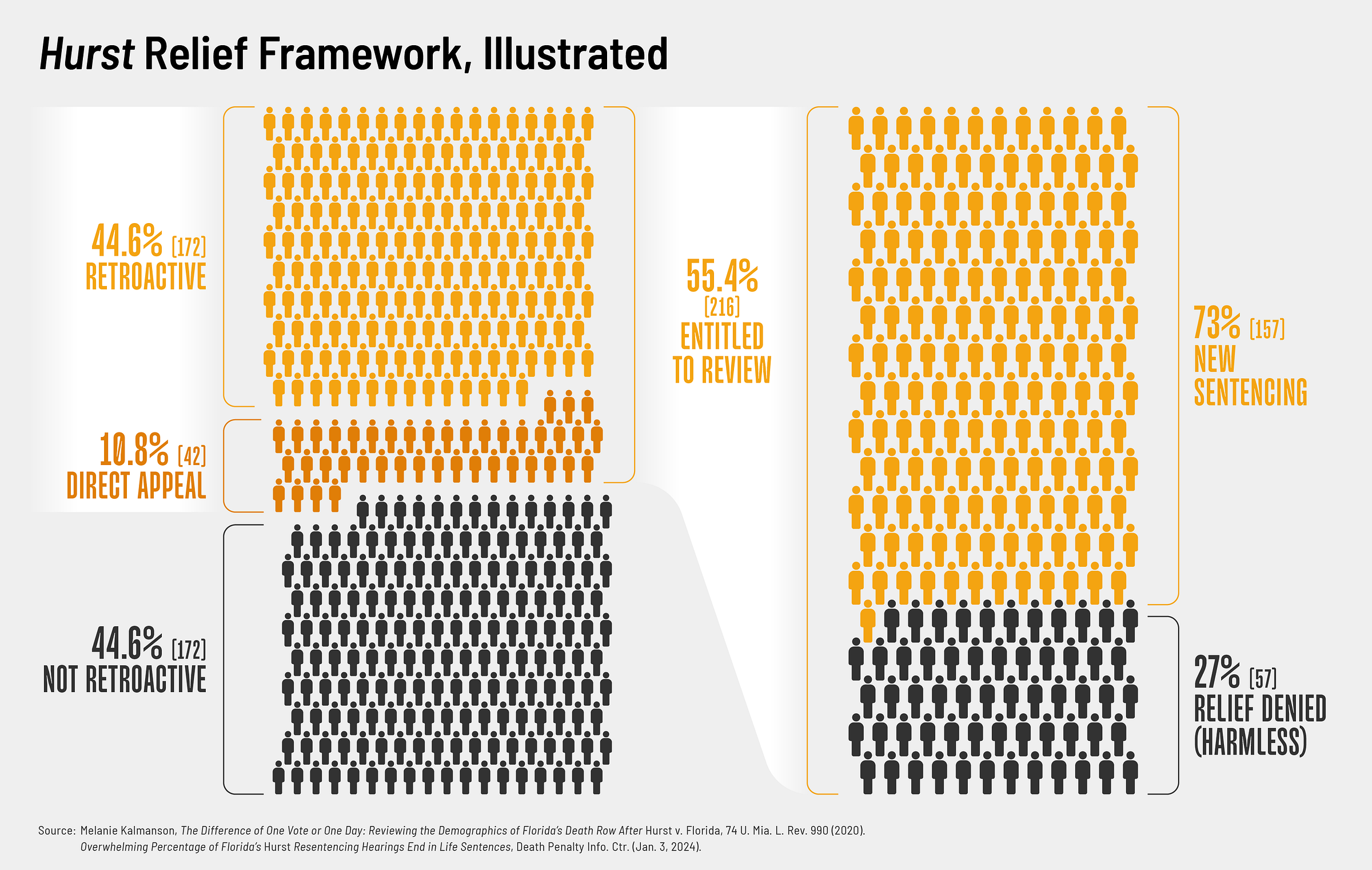It’s been over eight years since the U.S. Supreme Court held in January 2016 in Hurst v. Florida that the way Florida sentenced people to death violated capital defendants’ right to jury trial under the Sixth Amendment to the U.S. Constitution.
Below is a snapshot of Florida’s death row population over the years, at points where I could find the data.
The number in 2002 came from the Florida Supreme Court’s decision in Bottoson v. Moore, in which the Court addressed how the U.S. Supreme Court’s decision in Ring v. Arizona applied (or didn’t apply) to Florida. The number in December 2016 came from the Florida Supreme Court’s decisions applying Hurst v. Florida on remand. For a detailed explanation of Hurst, see the five-part TFDP series available here.
The numbers for May 2023 (shortly after Gov. DeSantis signed the revised capital sentencing legislation into law) and February 2024 came from the Death Row List maintained by the Florida Department of Corrections (available here).
Below is a graphic that illustrates how the 386 people who were on Florida’s death row when Hurst was decided were sorted based on the Florida Supreme Court’s post-Hurst framework (explained in the five-part TFDP series available here).
Per a recent study by the Death Penalty Information Center, as of January 3, 2024, 93 of the 157 Hurst resentencing proceedings granted had been completed. Eighty-two percent, or 72, resulted in a resentence of life, and 18% (or 17) resulted in a resentence of death. The others remained outstanding. (Read more about the study here.)





Very informative figures